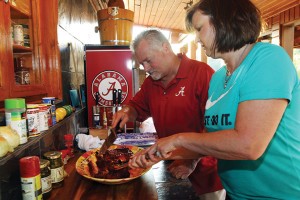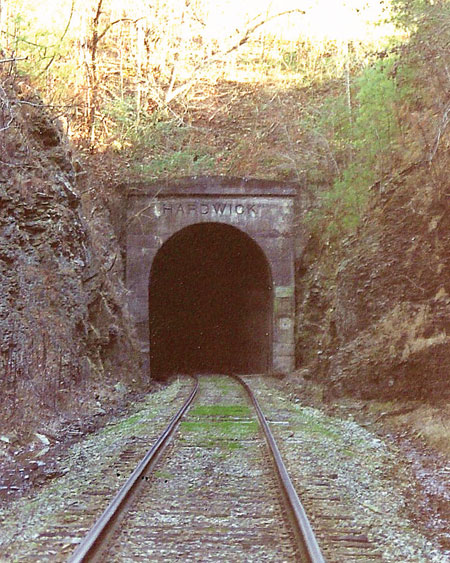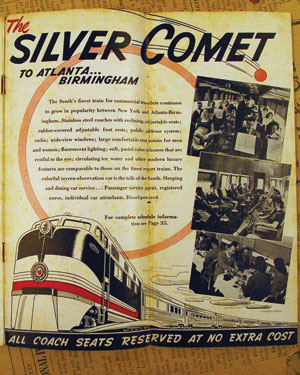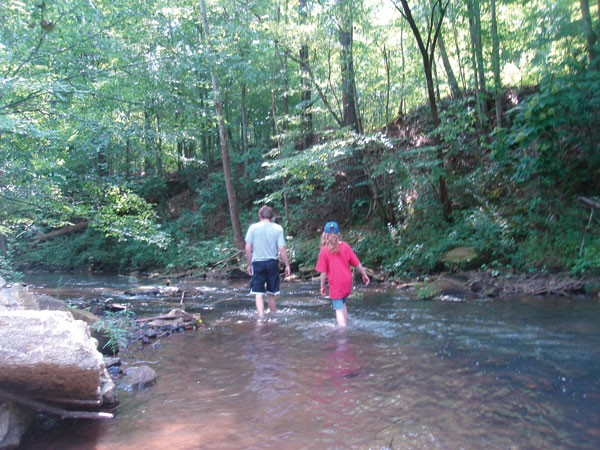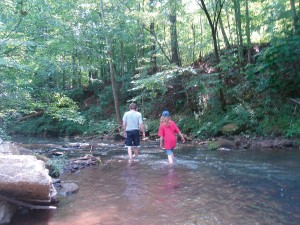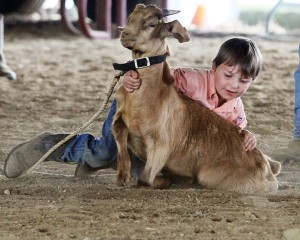Story by Graham Hadley
Photos by Jerry Martin
Want a car exactly like Steve McQueen’s “fast machine” from Bullitt?
Want to give your vintage Mustang Fastback the latest in modern suspension, engine, exhaust, add air conditioning and power seats and have it meet emissions regulations in all 50 states?
Want to turn your SVO into a street-legal racecar?
Or do you just want your 1964 1/2 Pony Car restored to show-room new (or your El Camino, or Fairlane or Lincoln Mark VII for that matter)?
Then you need to talk to Paul Becker and Jason Nance at SVP Unlimited in Odenville.
Paul and Jason have decades of experience working with cars — both sharing a love of vehicles since their teenage years — and have successfully turned that into a thriving custom-vehicle business located on at the back of a small business complex just off Highway 174 in Odenville.
One glance around the garage and surrounding lot, which is full of vintage and specialty vehicles in all states of repair and, in some cases disrepair as parts are pulled for other projects, and there is no question that SVP specializes in the iconic Ford Mustang. But Paul and Jason don’t draw any lines in the sand when it comes to cars — they will work on just about anything.
Paul is the owner, but quickly points out that the business is a partnership and that they both bring essential skill-sets and a dedication — or “obsessive compulsiveness” as he puts it — to detail.
“We may not do the fastest restorations in the business, but we want to turn out the best vehicles we can, and that takes time,” Paul said.
And for customers who are willing to wait — unless they have lots and lots of money on hand — that patience pays off with some of the finest custom rides produced anywhere in the country.
“If someone came in here and said money is no object, then we could probably turn one of these restorations around in a year, but the average is two to four years, sometimes more,” Paul said.
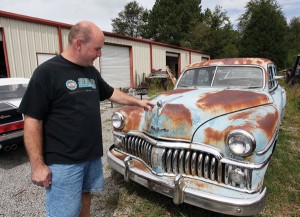 One of the vehicles they were rolling out that was nearing completion is a replica of a vintage 1967 Shelby Cobra GT 500 — a compilation of three different vintage cars combined with the most modern engine and suspension parts. They even had to cut special channels through the trunk for the performance exhaust. The price tag: around $130,000.
One of the vehicles they were rolling out that was nearing completion is a replica of a vintage 1967 Shelby Cobra GT 500 — a compilation of three different vintage cars combined with the most modern engine and suspension parts. They even had to cut special channels through the trunk for the performance exhaust. The price tag: around $130,000.
“We rebuilt the whole car; took it down to the welds. … It will pull 1.5 g on a skid pad, and when we finish tuning it, it will turn around 480 hp,” Paul said.
That is one of the multi-year projects, and it is a time frame that makes car modification and restoration projects possible for many of SVP’s customers. Custom car work can quickly hit the tens of thousands of dollars mark. By breaking down the work and the billing into smaller pieces, SVP does exactly what is in their customers’ budgets each month.
A few hundred dollars of work here and there, and gradually the project nears completion.
“Customers say what they can pay, and we schedule the restoration to what they can pay. That way, we can work with a wide range of budgets,” he said.
Often, SVP is hired just to do what Paul calls the “really hard work,” and will deliver a partially completed car to a customer, something perfect for one of those “father-and-son” weekend garage projects.
On top of what they do for their customers, Paul and Jason also have their own personal vehicles on site.
Among other vehicles, Jason is working on a Ford Fairlane and an El Camino. The latter is literally a labor of love. Jason’s father is a mechanic who taught him everything he knows. The first car he ever bought for his son was an El Camino. Jason is duplicating that car to give back to his father, who is too ill to work on cars anymore.
Paul did something similar for his father with a restored Lincoln.
His personal fleet on the lot includes a 1950 DeSoto Custom (complete with the original light-up hood ornament) that he plans to get running and road worthy, an older panel truck with wooden flooring that was once an ambulance, one of the classic Mercury Cougars with the sequential turn signals, and, of course, a whole host of Pony Cars — Fastbacks, at least one 1968 390 V8 (the same car used in the famous “Bullitt” chase scene), Mach 1s and several SVOs — which is where Paul got the idea for the name SVP.
Especially when it comes to the vintage vehicles, Paul keeps several “for-sale” projects in the works. He builds on the cars when he can, and they are always for sale. The price goes up on them the more work he does.
Paul has a special affinity for the Mustang SVO, which draws its name from Ford’s Special Vehicle Operations Department. They were made in limited production from 1984 to 1986 and at the time were the fastest Mustangs on the market. He has several of the specialty cars on hand, including one street-legal racecar that he sometimes drives around to get parts.
“People will look at you funny when they see you going down the road in a fully caged racecar,” he said.
It was his love of that particular vehicle that originally brought Paul to Odenville and Alabama. He had started the business in 1999 in Annapolis, Md., and focused mainly on supplying specialty parts.
He came to take part in a track days SVO event at the Gran Prix Raceway between Talladega and Munford in Talladega County and stayed with some friends in Odenville for the duration.
While he was here, he took time to visit around town and saw how people treated each other and how they did business. A few days later, his wife, who was home sick and having to work, called to see how things at the track were going.
“I told her they were going great. Then I told her, ‘We are moving here.’ She hung up on me,” he said.
But as soon as Paul got the chance, he flew his wife down here and she fell in love with the area, too.
Paul opened the first SVP in Odenville, over by the Post Office, in 2002, still focusing on selling parts, but doing some specialty car work.
Along the way, he met Jason at several car events dedicated to another car they both are fans of, the Lincoln MK VII, and soon brought him on board. Jason specialized in paint and body work.
By 2003, they were in their current location, which had more room and was better suited to their needs, and focusing more and more on custom cars. Though they still have specialty parts — and can track down more than what they have on hand, the business these days revolves around building the perfect car for their customers (or themselves).
Paul and Jason say St. Clair County and Odenville in particular have been good for their business, helping encourage and support them in their endeavors.
They are returning the favor, both by bringing in money to the community — SVP has customers all over the world; they even had a Mustang in the paint room that will eventually be shipped to London, England — and in more direct ways.
SVP is in the process of converting a surplus military High Mobility Multipurpose Wheeled Vehicle, or Humvee — what eventually spawned the Hummer line of civilian SUVs, for use by the Odenville Police Department. When they are done with it, the Humvee will go from the camouflage military paint job it has now to a more appropriate black paint that is virtually indestructible and designed to be graffiti proof.
Paul said he gets up every day getting to do something he loves for a living and expects the business he and Jason have worked so hard to build to continue to grow and flourish here.
BELOW: To read what it is like to own this piece of automotive history,
check out the story in this month’s issue of Discover, The Essence of St. Clair
































































